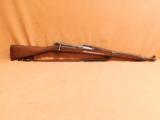 |
 |
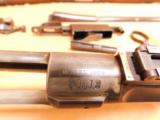 |
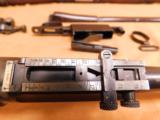 |
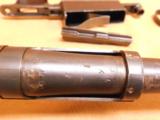 |
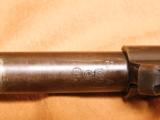 |
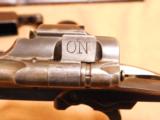 |
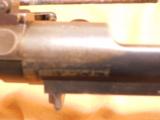 |
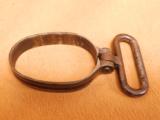 |
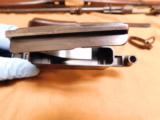 |
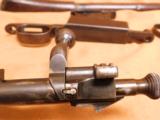 |
 |
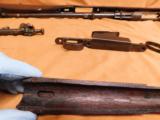 |
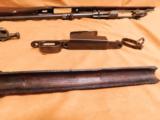 |
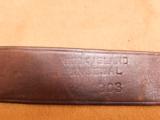 |

Springfield 1903 RARE Early, All Original variant
Guns International #: 101248057 Seller's Inventory #: 40019
Category: Springfield Rifles - 1903 - Springfield Rifles - Military
Seller's Information
When emailing or calling sellers direct, please mention that you saw their listing on GunsInternational.com
Seller: CAALEX
Company: Classic Arms & Archery
Member Since: 9/16/14
First Name: Online
Last Name: Sales
State: Kentucky
Zip: 40503
Country: United States
Phone: (859) 278-8370
Fax: (859) 278-1759
Number of Active Listings: 0
Total Number of Listings: 3598
Seller: FFL Dealer
Return Policy: 3 day inspection and return policy on used guns.
Payment Types Accepted: AmEx, Discover, Master Card, Visa, Money Order, Certified Check, Personal Check (item held until check cleared)
Description:
This is a very early and fine condition, Springfield Armory Model 1903 Rifle in .30-06 with both the 1905 Modification and the 1906 Alteration to .30-06, that was originally manufactured at Springfield Armory in 1903 as a rod bayonet rifle and then later modified as changes in 1903 design were implemented.
As the Ordnance Department looked for a suitable substitute for the Krag-designed rifle, it developed several experimental designs based on the Mauser bolt action rifle design. Two of these experimental rifles, the Model 1901 and Model 1902, served as the test bed for what became the Model 1903 Rifle. After final tests and evaluation of the Model 1901 and Model 1902 Experimental Rifles were concluded, the Ordnance Department completed the design of the new model rifle that incorporated recommended changes to the experimental designs. Then, on June 20, 1903, the Ordnance Department ordered the commanding officer at Springfield Armory to begin manufacturing the tools, dies, fixtures and gauges needed to manufacture 225 of the newly-adopted Model 1903 Rifles per day.
Because much of the tooling from the Model 1901 and Model 1902 Experimental Rifles could be used for the new Model 1903, Springfield Armory was able to complete tooling-up relatively quickly. As a result, Springfield began Model 1903 Rifle production in November 1903. By the end of fiscal year 1904, July 1, 1904, Springfield had manufactured 30,503 Model 1903 Rifles.
Springfield's original 1903 design, which incorporated the now infamous "rod bayonet" design used for a time on the Model 1884 and 1888 Springfield Trapdoor Rifles, was quickly scrapped after comments by then-President Theodore Roosevelt, whose comment that the rod bayonet was one of the more stupid weapons designs he had seen, quickly led the Ordnance Department to scrap the idea and scramble for a revised design. The result was the 1905 Modification where the rod bayonet was removed and a new Model 1905 Knife Bayonet was designed to fit on a new upper barrel band with integrated bayonet lug (and a new rear sight, the Model 1905 Rear Sight, was installed).
Following shortly on the heels of the 1905 Modification was the Ordnance Department's testing and development of a new round to replace the round-nosed .30-03 cartridge. The Ordnance Department settled on a new cartridge that was based on the German "spitzer" sharp point bullet design, which was designated the Cartridge, Caliber .30, Model of 1906, known since then as the .30-06. This change in cartridge required Springfield (and Rock Island Arsenal, which was behind Springfield in production) to develop new barrels chambered for the .30-06 cartridge and modify older barrels that were originally chambered for the .30-03 cartridge. The modification of .30-03 barrels resulted in a new barrel that was .2" shorter and this required previously modified stocks to be reduced in length at the nose by an equal amount.
The 1906 Alteration to .30-06 was considerably delayed, however, by the design and testing of a new rear sight ladder that reflected the new ballistic characteristics of the new round with different leaf graduations (now out to 3,850 yards). The first of the new sights was not completed until November 1907. New rifles were still being manufactured in the interim, chambered for the new .30-06 round, but were assembled minus the missing rear sight and placed into stores until the new sight was available. The resulting delay meant that new rear sight production did not catch up to rifle production and alteration until late June 1908. It was about this time that this particular rifle underwent alteration at Springfield Armory. For the definitive treatment of the alterations and modifications of the 1903 Rifle from introduction through 1910, I recommend “Springfield Model 1903 Service Rifle Production and Alteration 1905-1910” by C.S. Ferris and John Beard, C.S. Ferris, Publ, 1995. The serial number of this 1903 Rifle is 30513, which was manufactured at Springfield Armory in 1904. Given Springfield’s production of approximately 250 rifles per day, it is estimated that this particular rifle was originally manufactured as a rod bayonet rifle in late 1904.
The serial number on the receiver is stamped in the early script style. The Receiver retains the majority of its original finish on the lower, protected areas with the upper, exposed areas now exhibiting a plum/pewter patina with minor pinprick pitting in areas. There is no Hatcher Hole on the left side of the receiver so it was never altered for WWII service. The bottom of the receiver has numerous sub-inspection stamps. The Trigger is the early first type with thin taper and smooth face. The Trigger retains the majority of its finish and this particular type of Trigger was used by Springfield up until 1910.
The Magazine Cutoff is the correct and early first type with serif "OFF" and "ON" stamps and the rounded area where the cutoff switch is milled into the portion with the spindle hole. The cutoff exhibits some pitting on the surfaces but it functions correctly and moves smoothly.
The Rear Sight is held by the early and original, open bottom Fixed Rear Sight Base designed for the Model 1905 Rear Sight. The Rear Sight Base is pinned at the bottom with the pin ground flush to the outer surface of the base.
The Rear Sight is a Springfield manufactured Model 1905 Adjustable Rear Sight with the earlier .30-03 leaf graduations to 2450 yards. The face of the leaf remains correctly in the white. The top of the Leaf has the volley fire notch. The back of the Leaf, at the top, correctly omits any slide stop (added to later variations to prevent the slide from coming off the Leaf). The Drift Slide is the Second Type with the horizontal line that bisects the peep hole and without the vertical platinum line. The Slide is the third type and the Elevation Slide Binding Knob is the early type that is dished and knurled with a central groove running around the knurled portion. The Windage Knob is the early, small .450” diameter type that is also dished with knurled and grooved outer edge that exhibits wear on the checkering. The slide correctly adjusts for windage and elevation.
The Barrel is a Springfield marked barrel with serif “SA” over the Ordnance Bomb stamp over year date “05.” As Ferris and Beard point out in their book on the early Springfield alterations, Springfield accumulated a number of barrels between January 1905, when 1903 production ceased while the 1905 alterations were finalized, and November 1905, when production resumed with the new changes incorporated. These barrels, which were manufactured prior to January 1905 and could be from 1904, were unmarked and left in the white. When the barrels were pulled from storage for installation on a receiver the stamping was applied and the barrels were then blued. Because the barrels had not been stored based on the month of manufacture in 1905, the barrel stamping omitted a month and only included the year “05.”
As this barrel was originally manufactured for a Rod Bayonet Rifle, it was originally chambered for the .30-03 cartridge, was a longer barrel and had the sight spline located for the Rod Bayonet Rifle front sight. As part of the 1905 Alteration, the new Model 1905 Front Sight was added. This new front sight was set further back than the Rod Bayonet front sight and the base was pinned at the front. To accomplish this the front portion of the spline was machined away. Because the total length of the newly machined spline was now shorter than the width of the new Model 1905 Front Sight Stud, this left a small rectangular “hole” on the rear of the front sight stud where it meets the barrel. The Front Sight Moveable Base retains considerable original blued finish and the stake mark on the moveable base lines up with the stake line on the stud. The Barrel retains its original crown at the muzzle and the bore has strong rifling with a mirror finish on the lands and evidence of frosting in the grooves. Because of the very early manufacture date of this barrel, it underwent both the 1905 and 1906 alterations. The 1905 alterations, as noted, eliminated the rod bayonet and incorporated a knife bayonet but kept the barrel chambered for the original .30-03 cartridge. The 1906 alterations changed the chambering to the new 30-06 cartridge. This change necessitated shortening the barrel by .2”. This 1906 change is visible on this rifle under the original open fixed rear sight base. The original notch where the fixed rear sight base was pinned to the barrel when it was chambered for .30-03 (and .2” longer) is now set back and exposed by .2”.
The Trigger Guard is the very early First Type, which was milled, which was the original type from the beginning of 1903 production. It was found that the length of the First Type allowed the trigger to be pushed forward a very small amount, but sufficient to pivot the sear enough to fire the rifle. A new Second Type Trigger Guard was developed in 1905 that shortened the trigger slot and eliminated this problem but early First Type guards were modified in 1904 and later by adding a small transverse pin at the front of the slot to prevent the trigger from moving forward. This First Type Trigger Guard has the transverse pin modification. Springfield noted this alteration by stamping a “S” on the bottom of the guard in the area covered by the floor plate. The Trigger Guard retains considerable original blue finish that is fading on the sides and in the magazine well and exhibits wear on the bottom, exposed portion, which now has a mixed plum and pewter patina. The Floor Plate is correctly milled and has the distinctive straight milling cut on the bottom that was the standard at Springfield. See “United States Rifles and Machine Guns: Manufacturing the Springfield, 1903 Model Service Rifle,” by Ethan Viall Colvin, reprint of McGraw-Hill edition from 1917, page 173. The Floor Plate exhibits the same mixed pewter and plum patina on the bottom, exposed portion. The interior, protected surface retains the majority of its original, fading blued finish.
The Follower Spring is the correct type with rounded crimp/bend points and it retains considerable fire tempered finish. The Follower is the correct milled type that retains considerable blued finish on the top surface with wear on the top divider and on the right side ledge as well as on the front and rear ends. The bottom of the Follower retains the majority of its original blued finish with wear noted towards the back where the follower spring bend rests.
The bolt is the correct and early type botl with a straight handle and small gas hole. The botl has a "C" on the safety lug and a punch mark hardness test proof on the underside of the handle. The bolt retains about 80% of its blue and shows wear on the friction points and high edges. The extractor collar is the correct, milled version and retains considerable amounts of finish. The extractor is the correct, early type with a small gas-escape hole.
The Bolt Sleeve is the correct and early 3-position type with thinning bluing that is starting to fade in spots. The Safety is the correct early Second Type with serif “READY” and “SAFE,” that retains the majority of its finish. There is correctly no hole in the top of the safety.
The Cocking Piece is the correct early type with four distinct rows of fine checkering (the fourth row is the thin row that begins to round over the edge towards the end). The Cocking Piece retains 75% of its blue finish on the barrel and remnants of the original oil quenched finish on the head. There are two milled rings on the neck of the Cocking Piece that contour smoothly towards the front. The Firing Pin Collar shows considerable original blue finish inside the milled ridges with the balance largely worn to the white. The Firing Pin (or Striker) shows considerable original blue finish in the protected areas but is largely worn on the exterior surfaces to the white.
The rare and beautiful Springfield finger-groove stock is in excellent condition and has no bolts and retains its high wood profile. This stock is an original 1905 alteration stock that was modified (during the period) for the 1906 change when the barrel length was shortened by 0.2" when the caliber was changed from .30-03 to .30-06. The left side of the stock has the original clipped-box script cartouche reading "CN 1908" and a script "S" firing proof on the wrist. Attached is a 1903-dated Rock Island Arsenal sling.
This stock retains its original oiler cutout in the butt and never received the later modification of an additional milled out spare parts recess cut, which was incorporated into all stocks starting in 1911. The original butt plate is present and it retains considerable original, but now fading, blued finish. Both the convex, single slot tang screw and flat, single-slot plate screw are present. The trap door is present and the original spring keeps the door closed securely.
This particular stock is identified as a Model 1905 Stock later altered to the Model 1906 configuration by the presence of the wood plug in the transverse forward portion of the stock. Original Model 1905 Stocks had the upper band with bayonet lug (for the Model 1905 Bayonet) but it was .2” longer than the later stock. When the stock was altered after the change to the .30-06 cartridge and its .2” shorter barrel, the stock nose was shortened by .2” and the original transverse upper band hole was plugged and a new hole drilled.
The Stock has the milled Rear Sling Swivel Assembly, which retains considerable original, though thinning, blued finish. The Lower Band Spring retains the majority of its original blued finish. There are numerous dings and scratches noted but no cracks or chips noted.
The Handguard is a rare, original and beautiful concave ramp type with the flat top and fixture slot on the bottom that was manufactured prior to 1908. It correctly does not have the handguard clips, which did not appear until 1910. It also has the correct, large, rounded Windage Knob clearance cut. There are minor dings and small scratches on the handguard and there is a lengthwise crack in the front portion and a small crack in the very rear portion but the handguard is still solid. The finish on the both the stock and handguard match perfectly.
The Lower Barrel Band is the correct milled type with a "U" stamp on the right side and it has the solid shank on the Upper Sling Swivel. The Band and Sling Swivel retain the majority of their original finish that is starting to age to brown. The Upper Band is the correct milled type introduced when the knife bayonet was approved in 1905 and it correctly does not have the "H" hardness stamp on the bottom of the bayonet lug, which did not appear until 1908. The Band retains the majority of its finish that is starting to turn brown from age. The Stacking Swivel has rounded ends or tips and is milled.
This is a very scarce Springfield Armory Model 1903 Service Rifle that was witness to all of the early changes from its original manufacture as a 5-digit serial number Rod Bayonet Rifle receiver, to its later modification for the 1905 Knife Bayonet and then the subsequent alteration to .30-06 caliber.
All items are also available for sale in our brick & mortar store and are subject to prior sale. Think long, think wrong.
We are always buying unique and collectible single firearms and collections. Please give us a call at 859-278-8370 to discuss what you have available. We also offer free appraisals and guarantee TOP DOLLAR PAID for your unique and collectible firearms.
Payment
On firearms, we typically only accept credit cards or money orders/cashier's checks.
- Sale prices reflect a 3% cash/money order discount. This discount is not valid for credit card purchases. Add 3% to the total cost for such purchases.
- Any purchases made in the state of Kentucky incur a 6% sales tax.
Shipping
We ship firearms via UPS. They must be sent to an FFL. Hand guns must travel via Air, whilst long guns and other items can go via Ground. Non-firearm accessories, such as magazines, can be shipped via USPS Priority Mail at the customer's request. We provide tracking numbers with all of our transactions. If you'd like a shipping estimate, please contact us through the and provide, at the very least, a ZIP code as to where the item would be sent.
- If paying by credit card, store policy is to ship to the billing address of the card.
- If paying by Money Order, we can ship to wherever it's legal.
- The exception is, obviously, serialized items.
Legal Policy
We can only ship items to areas in which they are legal. If you live in a more restrictive area, please check your local laws before or buying. We are, for the most part, willing to ship to the 50 states as long as it's legal. We may require proof of legality before proceeding with a transaction that is exempt from a normal law.
Please only submit an offer if you are legal to own this item.
Serialized items must be transferred through an FFL. We do accept C&R's on any applicable items. You may have to pay your FFL a fee, which is not covered by this . You are responsible to know and follow all laws (including shipping) in purchasing such items in your state. Visit these sites below to verify the laws in your area:
- ATF
- NRA ILA
NFA Information
Some items are regulated by the National Firearms Act (NFA). This includes, but is not limited to, short-barreled rifles, short-barreled shotguns, and suppressors. Please check with your local and state municipalities for any further regulatory requirements. It is the buyer’s responsibility to make sure they comply with all NFA rules and applicable laws. Such items MUST be transferred to a Class 3 FFL via a Form 3, and then transferred to you via a Form 4 from your local Class 3 dealer. The process of getting a Form 3 approved by the BATFE takes on average 6-8 weeks. Your patience is appreciated.
SOLD
Curio/Relic: Yes
Manufacturer: Springfield
Model: 1903
Serial Number: 30513
Caliber Info: .30-06
Condition: Used